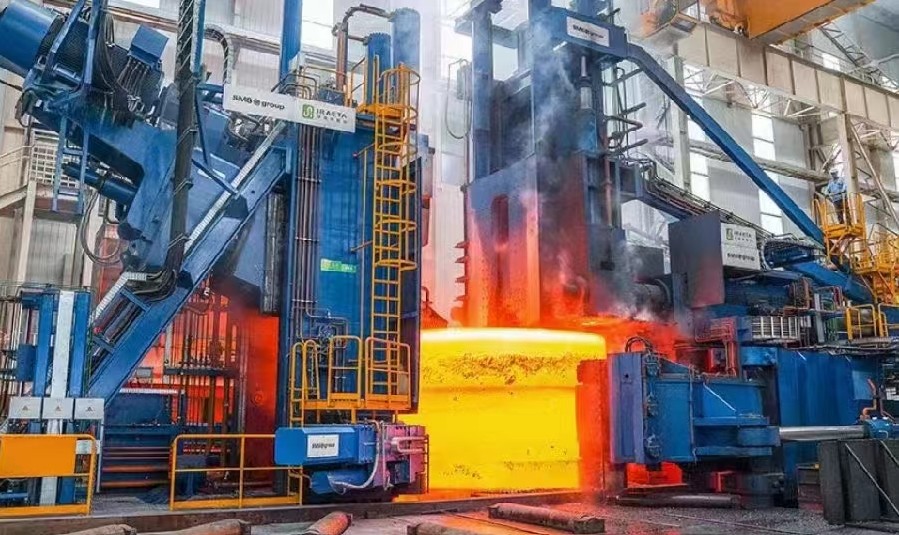NEWS
HOME > NEWS
There are three differences between cold-rolled steel and hot-rolled steel:
1. The essential difference between the two:
(1) The essence of cold-rolled steel: cold-rolled steel is steel produced by cold rolling. Cold rolling is a steel plate in which the steel plate is further thinned to a target thickness at room temperature.
(2) The essence of hot-rolled steel: hot-rolled steel is a kind of steel rolled above the recrystallization temperature.
2. The characteristics of the two are different:
(1) Features of cold-rolled steel: The thickness of cold-rolled steel is more accurate, and the surface is smooth and beautiful, and it also has various superior mechanical properties, especially in terms of processing performance.
(2) Features of hot-rolled steel: high metal plasticity and low deformation resistance during hot rolling, which greatly reduces the energy consumption of metal deformation. Hot rolling can improve the processing performance of metals and alloys, that is, the coarse grains in the casting state are broken, the cracks are significantly healed, the casting defects are reduced or eliminated, the as-cast structure is transformed into a deformed structure, and the processing performance of the alloy is improved.
3. The processing requirements of the two are different:
(1) Processing requirements of cold-rolled steel: cold-rolled steel requires high power of the rolling mill, low rolling efficiency, and intermediate annealing is required to eliminate work hardening during the rolling process, so the cost is also high.
(2) Processing requirements for hot-rolled steel: hot-rolled steel is easy to roll, and the rolling efficiency is high. The hot-rolled temperature includes the start-rolling temperature and the finish-rolling temperature. About 80%, and the determination of the final rolling temperature should be determined according to the plasticity diagram of the alloy, and it is generally required to be controlled above the recrystallization temperature of the alloy.
Second, the use of cold-rolled steel and hot-rolled steel:
Application of cold-rolled steel:
Cold-rolled strips are widely used, such as automobile manufacturing, electrical products, rolling stock, aviation, precision instruments, food cans, etc. Cold-rolled thin steel plate is the abbreviation of ordinary carbon structural steel cold-rolled plate, also known as cold-rolled plate, commonly known as cold-rolled plate, sometimes mistakenly written as cold-rolled plate. The cold plate is a hot-rolled strip of ordinary carbon structural steel, which is further cold-rolled into a steel plate with a thickness of less than 4mm.
Due to rolling at room temperature, no iron oxide scale is produced. Therefore, the cold plate has good surface quality and high dimensional accuracy. With the addition of annealing treatment, its mechanical properties and process properties are superior to hot-rolled thin steel plates. In many fields, especially In the field of home appliance manufacturing, it has gradually replaced hot-rolled steel sheets.
Application of hot-rolled steel:
(1) Structural steel: mainly used in the production of steel structural parts, bridges, ships and vehicles.
(2) Weather-resistant steel: Adding special elements (P, Cu, C, etc.), it has good corrosion resistance and atmospheric corrosion resistance. It is used in the production of containers and special vehicles, and is also used in building structures.
(3) Steel for automobile structure: high-strength steel plate with good stamping performance and welding performance, used in the production of automobile FRAME, WHEEL, etc.
(4) Hot-rolled special steel: carbon steel, alloy steel, and tool steel for general mechanical structures, which are used in the production of various mechanical parts after heat treatment.
(5) Cold-rolled raw plate; used to produce various cold-rolled products, including CR, GI, color-coated plates, etc.
(6) Steel plates for steel pipes: with good processing performance and compressive strength, they are used to produce high-pressure gas pressure vessels with an internal volume of less than 500L filled with LPG, acetylene gas and various gases.
(7) Steel plates for high-pressure vessels: with good processing performance and compressive strength, they are used to produce high-pressure gas pressure vessels with an internal volume of less than 500L filled with LPG, acetylene gas and various gases.
(8) Stainless steel plate: Stainless steel has good corrosion resistance and is mainly used in food industry, surgical equipment, aerospace, petroleum, chemical and other industries.

